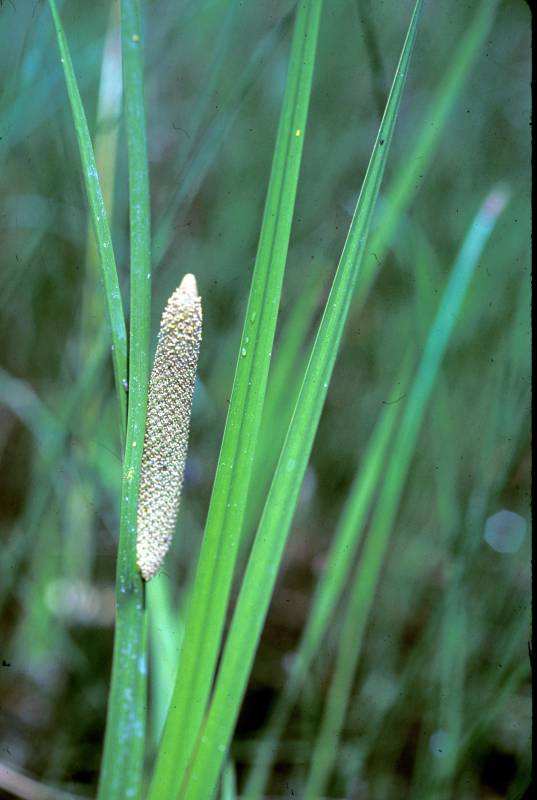Acorus americanus
American sweetflag, several-vein sweetflag
Leaves bright green, basally white with pink or red, sword-shaped;
venation parallel along length of blade, prominent veins 2-6; swelling in center evident in cross section, tapering toward both ends; vegetative leaves to nearly 1.5 m, sheathing base 18-52 cm or more, distal portion of leaf generally 31-89 cm long and 0.3-1.2 cm broad, margins entire; sympodial leaf typically 57-148 cm long, usually equal to or slightly longer than vegetative leaves, sheathing base 25-75 cm long, distal portion 28-78 cm long and 0.3-1.3 cm broad.
Inflorescence a solitary spadix, from 3-angled axis, spadices 3.3-7.4 cm long and 4.7-10 mm broad during flowering period, 3.5-8 cm long and 7-18.2 mm broad when in fruit, nearly cylindric, tapering, apex obtuse;
distal sympodial leaf extending beyond spadix; true spathe absent;
flowers 2-3 mm;
tepals 6, light brown;
stamens 6, distinct;
anthers yellow, turning inward toward flower center;
pollen grains usually deeply staining in aniline blue;
ovaries 1, green, usually 3-chambered, sessile;
stigmas sessile, minute.
Berries, shaped like upside down pyramids, 4-6 mm;
seeds usually 6, tan, slenderly oblong to obovate, 3-4 mm.
Acorus americanus
- Local floras:
BC,
OR,
WA
- Local Web sites:
Flora NW,
PNW Herbaria
WildflowerSearch
iNaturalist (observations)
USDA Plants Database
- LBJ Wildflower Center
- SEINet
- Plants of the World Online
- Encyclopedia of Life
- Wikipedia
- Google Image Search


